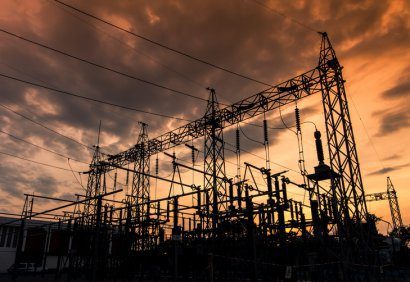
The U.S. Geological Survey (USGS) released a report in mid-December lambasting the United States for its dependence on foreign minerals. The Interior Department’s USGS found that the nation is entirely reliant on imports for 20 key minerals (cobalt, graphite et al), with China often being the main producer of these minerals. The administration is using the report to push for more domestic extraction of critical minerals, even though the only major graphite discovery in North America since 2001 has been in Canada, as is the vast majority of new North American cobalt exploration companies.
Since mining projects typically take around a decade to launch, the US is simply going to have to remain dependent for a short while longer. The only significant graphite mine currently active in North America is owned by Imerys Graphite & Carbon and is expected to be empty by 2020, but just over the border, Nouveau Monde Graphite Inc. (TSXV: NOU | OTCQB: NMGRF) (“Nouveau Monde”) is expecting a full feasibility study to be completed during fall 2018, as well as an environmental and social impact study on its Matawinie project just 150 km North of Montreal. So while it seems unlikely that the US will be able to produce significant quantities of graphite anytime soon, battery manufacturers will have a nearby accessible supply.
Lithium-ion batteries (“LiBs”) are at the center of a global environmental revolution, driven by a growing shift to electric vehicles and off-grid energy storage. Larger LiB manufacturers are investing heavily into battery gigafactories in China and North America, meaning that while the mining of critical minerals will almost certainly increase in the US, it won’t be for quite some time. With up to 150 kg of graphite required for the LiB in an electric vehicle, new sources of graphite are needed much sooner, especially in North America where supply is limited and manufacturing activity is expected to be high.
Nouveau Monde will begin marketing its graphite flakes from its demo plant later this year, but has already sourced the necessary manufacturing equipment and stripped the rock for the extraction of the first 40,000 tonnes. Last year, the company undertook a metallurgy optimization program aimed at refining its process flow, which increased overall recovery rate and confirmed the homogeneity of the mineralization at Matawinie. In October 2017, a pre-feasibility study revealed a pre-tax NPV of CAD$498.7 million and an IRR of 32.4% for just one part of the Matawinie graphite property that has probable mineral reserves of 33 million tonnes grading 4.39 % Cg.
Nouveau Monde also signed a letter of intent with a leading Chinese anode material producer to effectively penetrate the North American Li-Ion battery market. The companies aim to form a joint venture owned 51% by Shinzoom and 49% by Nouveau Monde to exclusively distribute Shinzoom Anode Materials in North America in order to gather market data. Once customer needs are clear, a processing joint venture owned 51% by Nouveau Monde and 49% by Shinzoom will potentially develop an anode materials processing facility in Quebec that could put out 20,000 tpy.
A sustained increase in North American mining activity should be expected over the next few decades, but in terms of the United States, they are going to have to continue to import vast quantities of minerals until they can supply their own gigafactories. This is essentially an attack on China’s long-held dominance over global mineral production, but the US is entirely incapable of competing with these supply volumes at present, even after China’s environmental crackdown, and so Canadian exports will have many gaps to fill. In the case of graphite, this will almost certainly fall to Nouveau Monde.
 Important regional electricity markets and whole countries are blowing past old record levels of wind and solar power by taking a variety of simple, practical steps to improve grid flexibility.
Important regional electricity markets and whole countries are blowing past old record levels of wind and solar power by taking a variety of simple, practical steps to improve grid flexibility.

 This figure has doubled in a decade with wind, solar and hydropower leading the charge. The findings come from the sixth edition of the Sustainable Energy in America Factbook, compiled by Bloomberg New Energy Finance (BNEF) and the Business Council for Sustainable Energy.
This figure has doubled in a decade with wind, solar and hydropower leading the charge. The findings come from the sixth edition of the Sustainable Energy in America Factbook, compiled by Bloomberg New Energy Finance (BNEF) and the Business Council for Sustainable Energy.



